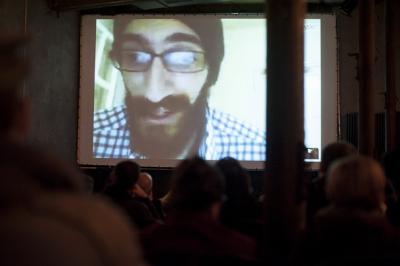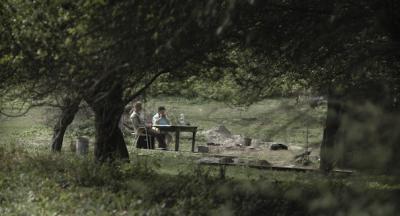
Syrian Metal in the Civil War
In Syrian Metal is War, I provide a portrait of musicians who play metal music during the Syrian war. While other people choose to fight and kill, they play music. A reflection on my film that I'm currently cutting. An edited version of this article was published in the Norient book Seismographic Sounds (see and order here).
The root of my motivation to shoot Syrian Metal is War was that I and many of my friends suffered a lot because of our love for metal music. When I was 15 years old, I played guitar, and people said that I was a strange, evil, and bad person. Because of metal music, I had to live by myself, and sometimes change cities.
Now, with my film, I want to show people who play metal music in the middle of war. They play music in a dead country, while other people choose to fight and kill. Throughout my journey, I met some of the most influential people in the Syrian scene, from all generations, and they shared their stories with me very generously; I could see their sadness when they spoke of war and their joy when they spoke of music. I could see the destruction in one part of the country, and people still leading normal lives in another, a magical thing to witness, truly. Metal is still a huge underground movement in Syria, with its immense fan base continuously expanding, almost daily. While it wanes and grows stagnant at times, it always seems to come back stronger: either with underground concerts, or new releases.
I started filming in the countryside of Hamah, then Lattakia, starting with a few interviews in enclosed spaces with people I knew personally. I saw that there was potential in this sort of idea, especially with the rise of new wave metal, even as the war worsened day by day. I had to expand. I roamed Syria, interviewing metalheads wherever I found them. In Aleppo, they play in a basement; in Damascus, they play one hundred meters from the front line. In Homs, the places where metalbands used to play were destroyed. Everyone I met was trying to find hope in the middle of war.

First, I filmed with my smart phone since it is easier to hide. Filming with a professional camera is not allowed and too risky. While traveling, one cannot miss the huge amount of destruction that covered the country in ash and brick, and I had to film that too, having realized that what I was seeing was reality, not just a bad dream, and it had stricken everyone alike.
At one point, I thought about acquiring a cameraman's license to film out in the open, rather than hiding, with my cell phone in hand, to sneak a peek at the dangerous zones in Syria, and to ensure that the documentary conformed to the country’s laws, so that I would not endanger the whole project and anyone who might work with me. This failed, of course, since acquiring a cameraman's license is difficult for those in Syria, let alone a cameraman wanting to document destruction and a subculture dubbed «satanic» and «evil» by the masses.
My dream is to deliver what I have seen. I want people to feel what I felt when I was filming. I want them to see that in Syria there are people who still care about music and see it as a haven for them. I want to show this to the world, through my lens. It is my hope for this documentary to be seen, and for people to understand Syrian metalheads' quarrels as they truly are, through an unbiased, unfiltered agenda.
Video not available anymore

This article was published in an edited version in the second Norient book «Seismographic Sounds».
Biography
Shop

Published on January 20, 2015
Last updated on April 11, 2024
Topics
From Muslim taqwacore to how the rave scene in Athens counters the financial crisis.
From linguistic violence in grime, physical violence against artists at the Turkish Gezi protests, and violence propagation in South African gangster rap.
How does Syrian death metal sound in the midst of the civil war? Where is the border between political aesthetization and inappropriate exploitation of death?





